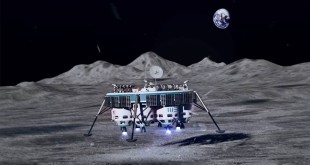The Air Force Research Laboratory (AFRL) is spearheading a transformative effort to integrate modular propulsion systems into small satellite architectures. This initiative, termed MODPROP, seeks to standardize interfaces between satellite buses and propulsion units, enabling rapid integration, upgrades, and mission flexibility. By developing this modular approach, AFRL aims to streamline satellite manufacturing and reduce integration constraints, positioning the U.S. as a leader in responsive and dynamic space operations.
AFRL’s Modular Vision
As the demand for small satellites continues to surge, the process of integrating propulsion systems tailored to specific missions has become increasingly complex and time-consuming. Traditional methods require bespoke designs for each satellite, leading to inefficiencies in cost, time, and scalability. Addressing this challenge, the MODPROP initiative by the Air Force Research Laboratory (AFRL) introduces standardized interfaces for propulsion systems. This innovation allows propulsion modules to be easily swapped, upgraded, or reconfigured to meet diverse mission requirements.
This initiative aims to create a universal framework for compatibility, enabling seamless integration of propulsion products with satellite architectures. By doing so, AFRL not only accelerates innovation but also significantly reduces barriers for new entrants into the space industry.
Key Objectives of AFRL’s Modular Vision:
- Encouraging Innovation: By adopting open standards, AFRL fosters a competitive ecosystem where startups and smaller companies can introduce advanced propulsion solutions. This fosters competition and accelerates the pace of technological advancements. This inclusivity drives technological breakthroughs and diversifies the space industry landscape.
- Accelerated Development: By simplifying integration and leveraging a plug-and-play approach, modular systems significantly reduce production timelines. This capability is especially critical for rapid deployments in response to emergencies or evolving operational needs.
- Faster Time to Market: Standardized designs streamline the development and testing processes. With predefined compatibility, satellite manufacturers can reduce assembly times, speeding up deployment and enabling faster responses to dynamic mission demands.
- Increased Mission Versatility: Modular systems offer unparalleled flexibility. Modular propulsion units offer customizable solutions tailored to specific mission profiles. Whether for communication satellites, Earth observation, or interplanetary exploration, modularity ensures that propulsion systems align with diverse operational needs. Satellites equipped with these systems can be reconfigured for a wide array of applications, including on-orbit servicing, debris removal, dynamic orbital maneuvering, and extended deep-space missions.
Innovations Driving Solutions
To overcome these challenges, AFRL and its industry collaborators are leveraging cutting-edge technologies and innovative approaches:
Miniaturization
Advances in component miniaturization are enabling the development of smaller propulsion units without compromising on thrust or efficiency. This approach maximizes the use of available space within satellite architectures, paving the way for more versatile mission designs.
Advanced Materials
The use of high-strength, lightweight materials is revolutionizing propulsion system design. These materials not only enhance durability but also reduce the overall weight of the propulsion units, leading to cost savings in launch operations and increased payload capacity.
AI-Driven Optimization
Artificial intelligence and machine learning are being deployed to optimize propulsion system performance. AI algorithms analyze mission parameters and operational data to fine-tune fuel consumption, power distribution, and trajectory adjustments. This technology not only improves system efficiency but also reduces operational costs, making modular propulsion more accessible to a broader range of space missions.
Through a combination of innovative materials, cutting-edge design strategies, and AI-driven insights, AFRL is overcoming the challenges of modular propulsion. These efforts are laying the groundwork for a new era of adaptable and efficient satellite technologies, ensuring continued progress in space exploration and operations.
AFRL’s Pioneering PUMA Initiative
The Propulsion Unit with Modular Applications (PUMA) exemplifies AFRL’s vision for modularity. This flagship effort highlights the potential of standardized propulsion units by integrating cutting-edge technology and sustainability principles. PUMA leverages the Advanced Spacecraft Energetic Non-Toxic (ASCENT) fuel, an environmentally friendly propulsion solution that underscores AFRL’s commitment to reducing the environmental impact of space missions.
By focusing on modular applications, PUMA sets a benchmark for the future of satellite propulsion, combining efficiency, sustainability, and adaptability. This initiative not only aligns with AFRL’s long-term goals of fostering innovation and reducing costs but also positions modular propulsion as a cornerstone of next-generation space exploration.
Through efforts like PUMA, AFRL is establishing a foundation for a more connected and dynamic space industry, ensuring that both established players and emerging innovators can collaboratively shape the future of satellite technology.
The Future of Modular Propulsion
As modular propulsion technology matures, it is expected to redefine satellite missions. Applications range from responsive satellite constellations for global communication to interplanetary exploration vehicles. Modular propulsion could enable on-orbit servicing, space debris management, and mission flexibility, paving the way for a more agile and sustainable space economy.
AFRL’s visionary approach represents a crucial step toward a standardized, adaptable, and scalable space architecture. By breaking down traditional barriers to innovation, AFRL is setting the stage for a new era of rapid satellite deployment and groundbreaking space exploration.
Conclusion
The AFRL’s exploration of modular propulsion systems is poised to revolutionize the satellite industry. By simplifying integration, reducing costs, and encouraging innovation, modular propulsion will not only enhance existing satellite capabilities but also open the door to new, ambitious missions. As AFRL continues to lead this transformative effort, the dream of exploring the cosmos efficiently and sustainably is becoming a reality.
 International Defense Security & Technology Your trusted Source for News, Research and Analysis
International Defense Security & Technology Your trusted Source for News, Research and Analysis

